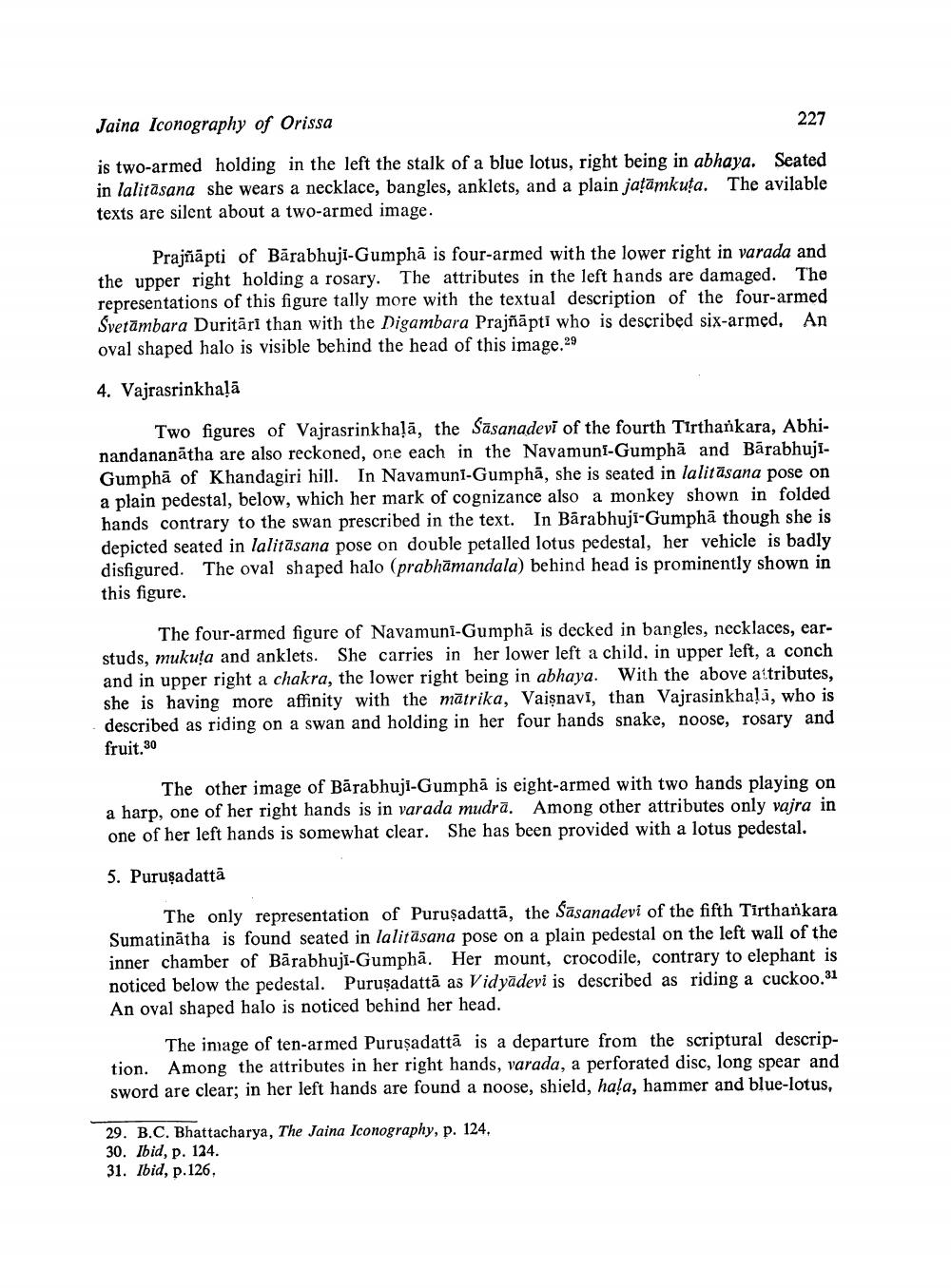________________
Jaina Iconography of Orissa
227
is two-armed holding in the left the stalk of a blue lotus, right being in abhaya. Seated in lalitāsana she wears a necklace, bangles, anklets, and a plain jațāmkuța. The avilable texts are silent about a two-armed image.
Prajñāpti of Bārabhuji-Gumphā is four-armed with the lower right in varada and the upper right holding a rosary. The attributes in the left hands are damaged. The representations of this figure tally more with the textual description of the four-armed Svetāmbara Duritāri than with the Digambara Prajñāpti who is described six-armed, An oval shaped halo is visible behind the head of this image.29
4. Vajrasrinkhalā
Two figures of Vajrasrinkhaļā, the Sāsanadevī of the fourth Tirthankara, Abhinandananātha are also reckoned, one each in the Navamuni-Gumphā and BārabhujiGumphā of Khandagiri hill. In Navamuni-Gumphā, she is seated in lalitäsana pose on a plain pedestal, below, which her mark of cognizance also a monkey shown in folded hands contrary to the swan prescribed in the text. In Bārabhuji-Gumphā though she is depicted seated in lalitāsana pose on double petalled lotus pedestal, her vehicle is badly disfigured. The oval shaped halo (prabhāmandala) behind head is prominently shown in this figure.
The four-armed figure of Navamuni-Gumphā is decked in bangles, necklaces, earstuds, mukuta and anklets. She carries in her lower left a child, in upper left, a conch and in upper right a chakra, the lower right being in abhaya. With the above attributes, she is having more affinity with the mātrika, Vaişnavi, than Vajrasinkhalā, who is described as riding on a swan and holding in her four hands snake, noose, rosary and fruit.30
The other image of Bārabhuji-Gumphā is eight-armed with two hands playing on a harp, one of her right hands is in varada mudrā. Among other attributes only vajra in one of her left hands is somewhat clear. She has been provided with a lotus pedestal.
5. Puruşadattā
The only representation of Puruşadattā, the Sāsanadevi of the fifth Tirthankara Sumatinātha is found seated in lalitäsana pose on a plain pedestal on the left wall of the inner chamber of Bārabhuji-Gumphā. Her mount, crocodile, contrary to elephant is noticed below the pedestal. Puruşadattā as Vidyādevi is described as riding a cuckoo.31 An oval shaped halo is noticed behind her head.
The image of ten-armed Puruşadattā is a departure from the scriptural description. Among the attributes in her right hands, varada, a perforated disc, long spear and sword are clear; in her left hands are found a noose, shield, hala, hammer and blue-lotus,
29. B.C. Bhattacharya, The Jaina Iconography, p. 124, 30. Ibid, p. 124. 31. Ibid, p.126.




